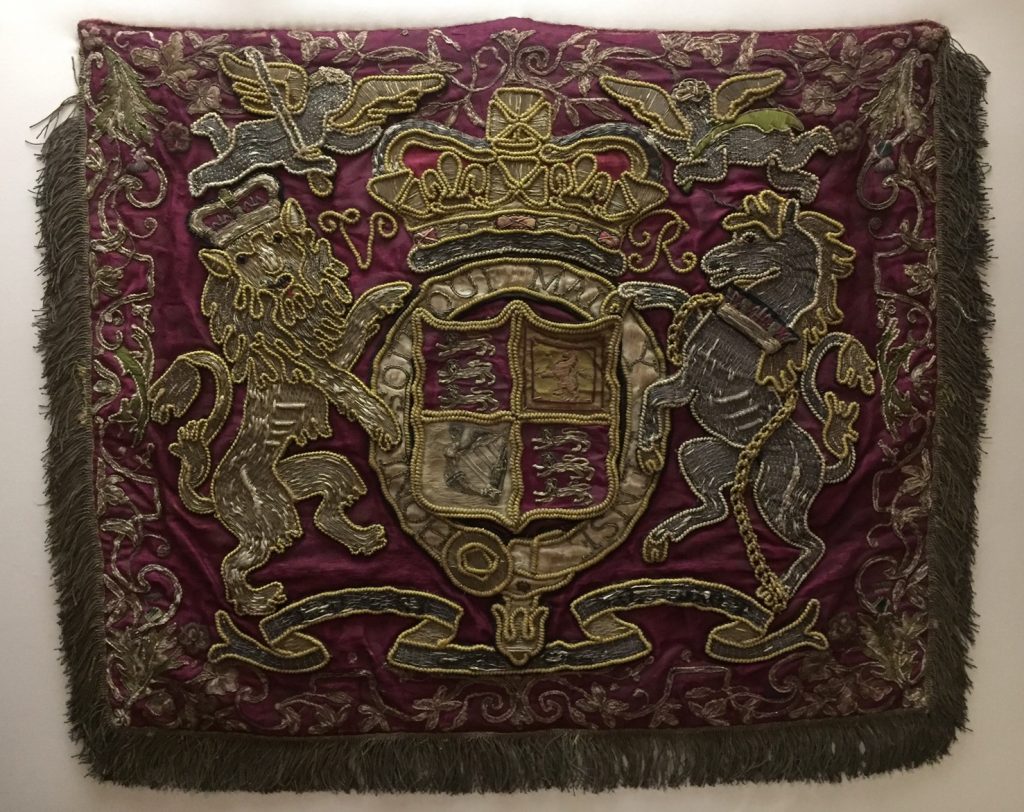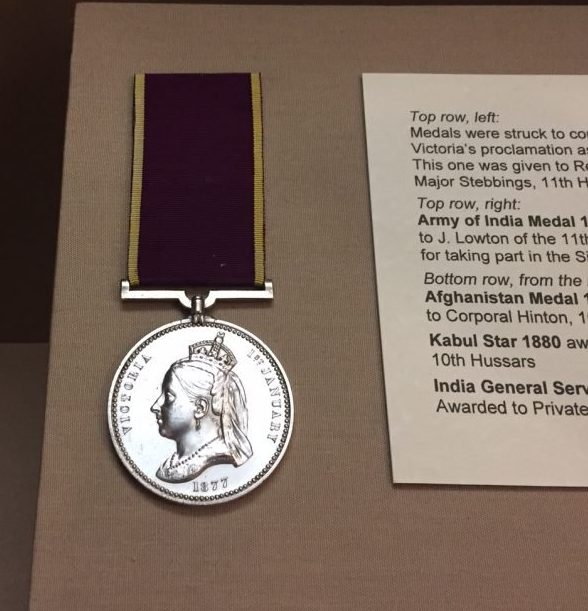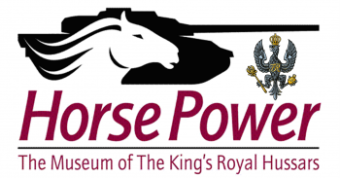Proclamation of The Empress of India and the Proclamation Trumpet
With the death of William IV in 1837, the reigns of the British monarchy passed to his niece, Queen Victoria. Although a grand coronation took place in 1838, it wasn’t until 1876 that she would also become the Empress of India.
India during the 1870’s was already under British Crown control since the Indian Mutiny in 1858. In a bid to strengthen the ties between Britain and India, the Prime Minister Benjamin Disraeli put forward that the Queen should be formerly proclaimed as Empress of India. This was agreed, and in 1876 the title was granted. As with all Royal titles this would now need to be proclaimed, typically this also meant a large ceremonial procession would accompany it.
The 11th Hussars had been stationed in India since 1866, and were at Delhi (having come from Umballa especially) when Queen Victoria was proclaimed Empress of India on 1st January 1877. The regiment were to play a significant part in the ceremonies, and the whole spectacle took months to plan. In August 1876, the Chief Herald (Col Osmond Barnes of the 10th Bengal Lancers) selected 12 Trumpeters for the occasion, taking one from each of the 6 British Cavalry Regiments in Upper India, and one of each from the 6 Indian Cavalry Regiments. Trumpet Major John Crush was selected, and had the great honour of representing the 11th Hussars.
John Crush came from Hutton in Essex and joined the 11th Hussars as a 19 year old in 1862. Before enlisting he had been a Cheesemonger, quite a contrast to life as a Cavalryman which he must soon have found out!
Out of the 12 Trumpeters selected for the Proclamation Trumpet Major Crush was put in charge as Chief Trumpeter, responsible for training and getting each man up to the required standard. A special Fanfare was composed for the occasion, which the Trumpeters practiced until it sounded perfect. No expense was spared for the Proclamation and 12 grey horses were also specially selected for the Trumpeters to ride in the procession. This also required extra training which was provided for them at the riding school under the instruction of Riding Master McGee, 11th Hussars.



On the 1st January 1877 Queen Victoria was officially proclaimed Empress of India with the full pomp and ceremony to match. F and G Troop of the 11th Hussars, along with the Viceroy’s Body Guard provided the escort to the procession which began the day. His Excellency The Viceroy, along with the rest of the procession headed towards the Amphitheatre at Delhi, where crowds in their thousands were gathering. All British and Indian Troops paraded in Review Order, forming up at the Amphitheatre around the Dais (This was a special platform constructed for the occasion). The Viceroy arrived at noon, and the proclamation could begin. Trumpets played, the proclamation was read and this was topped off by a 101 gun salute followed by a Feu de Joie from the troops. In typical military fashion, the Viceroy then gave a speech to the Officers about the distinguished services of the Army. The Trumpeters could now relax a little, having played the Fanfare and accompanying tunes.
A day of celebration followed with various mounted and dismounted competitions being held for the troops, each man also receiving a Rupee bearing the Head of Queen Victoria, Empress of India. The beautiful silver trumpet and embroidered banner used by Trumpet Major Crush was then presented to the Regiment, and can now be seen here at HorsePower, The Museum of The King’s Royal Hussars.
To mark the occasion, a medal was also issued for wear, but only to Commanding Officers and one selected man of each Regiment present. They were also given to other officials and staff officers. The 11th Hussars received four medals in total as listed below:
Lt Col A Lyttleton Annesley – Commanding 3rd Cavalry Brigade
Maj A P Garnett – Commanding 11th Hussars
Capt E S Rivett-Carnac – Acting Deputy Assistant Quartermaster General
RSM H M Stebbings – Selected man 11th Hussars
We are lucky enough to have the Medals to Capt Rivett-Carnac and RSM Stebbings in the museum collection, both of which are on display here in Winchester.


